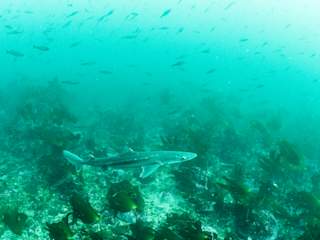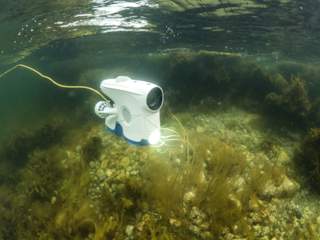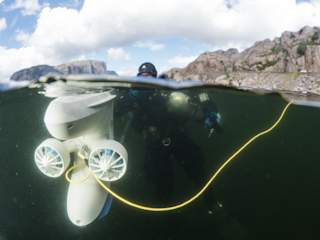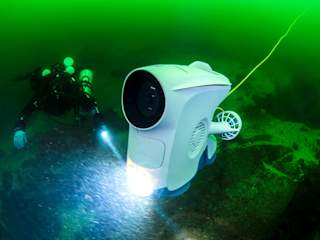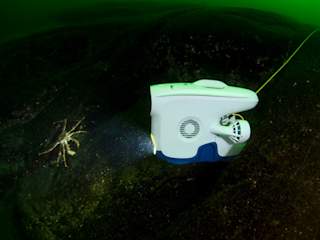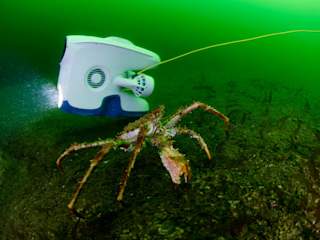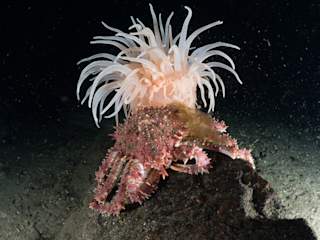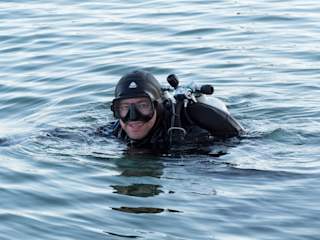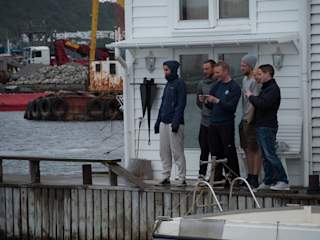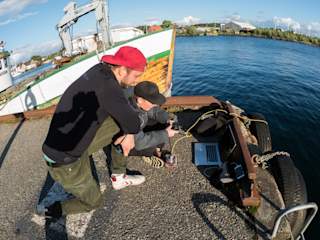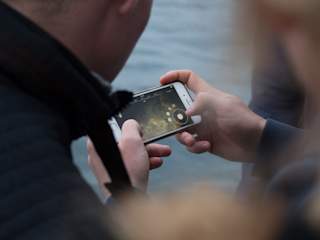Diving with the spiny dogfish that gather in the kelp along Jærkysten on the west coast of Norway has been an annual event since scuba divers discovered the sharks in this area in 2011. We joined the organisation Hjelp Havets Haier (Save the Sharks of the Sea) on their annual visit to observe and document the sharks.
The first day of diving we headed out from Reve harbour in nice summer weather. The sharks are spread out over a large area, and it requires some luck and patience to locate the school. The sea bed is quite flat and featureless, and there are often strong currents, so the diving is organised in such a way that you follow an anchor line down to the bottom, and stay within sight of it to avoid getting lost or swept away by the current. To increase our chances of seeing the sharks we hung a net with bait on the anchor line, then patiently waited for the sharks to pick up the scent.

On the first dive, we only had one single shark that came in and circled the bait a couple times before heading back into the kelp. For the second dive, we moved the bait further off shore to attract more sharks. Wind and currents where really starting to pick up but we managed to do the dive as planned, and thankfully, we got 3-4 sharks that came close and stayed with us for more than 20 minutes.
The spiny dogfish is a harmless medium sized species of shark, reaching a maximum length of 160-200 cm. They start reproducing at an age of 10-15 year, and carry their pups for a period of 22 months (longer than an elephant) before giving birth to 4-20 fully developed miniature sharks. The slow reproduction rate makes them vulnerable for overfishing, and in Norway the species is classified as endangered and targeted fishing for it is prohibited.

For the third dive wind, waves and currents had picked up to such an extent that we considered the conditions too rough and had to cancel the dive. Over the next few days the weather got worse with near gale winds, so unfortunately, we didn’t get a chance to do a shark dive with the underwater drone.
Because of the difficult conditions the next days where spent diving in more protected areas. The following days we visited Lysefjorden and had a look at the beautiful sea anemones living on underwater cliffs. I did the dives using Blueye Pioneer, following the scuba divers into the deep.

We stayed at the club house of Stavanger Scuba Diving Club, which is situated by the water in Pyntesundet. The local dive site ooffers good diving close to Stavanger city centre, with a couple small wrecks and a large variety of fish, shellfish, crabs and other types of marine life.
Vidar Skålevik of wedive.no and five-time gold medallist in the Norwegian underwater photography championships, joined the underwater drone for a dive in Pyntesundet.
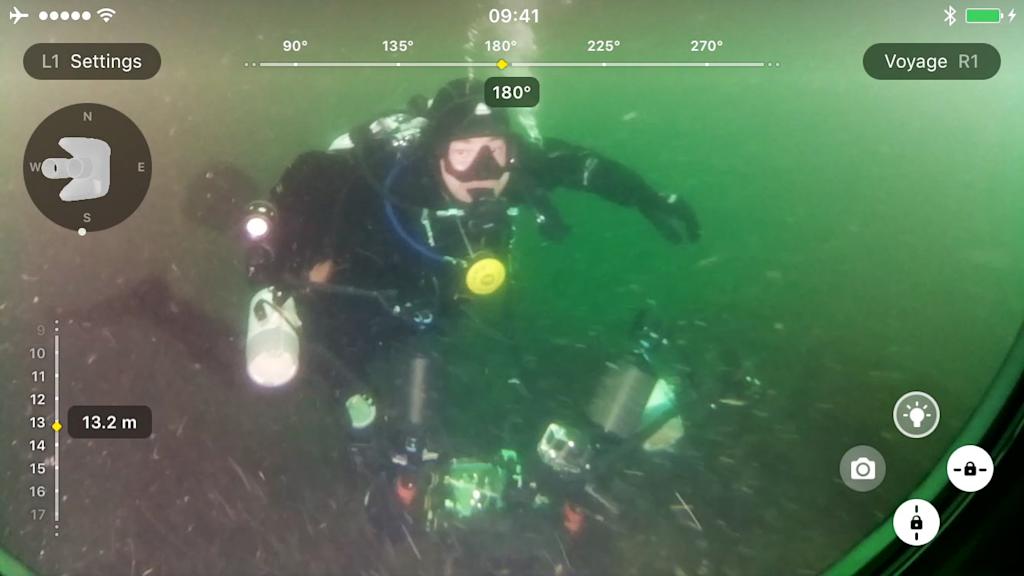
We explored the house wreck and the pillars under the pier for more than an hour. We are looking forward to seeing some of the photos and videos from the dive on wedive.no!

Despite not being able to film the spiny dogfish using our underwater drone the trip offered a great uppertunity for test dives and getting important feedback from the scuba diving community. We will be back next year with the Blueye Pioneer production model, and hopefully weather will be on our side.

